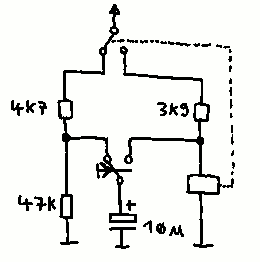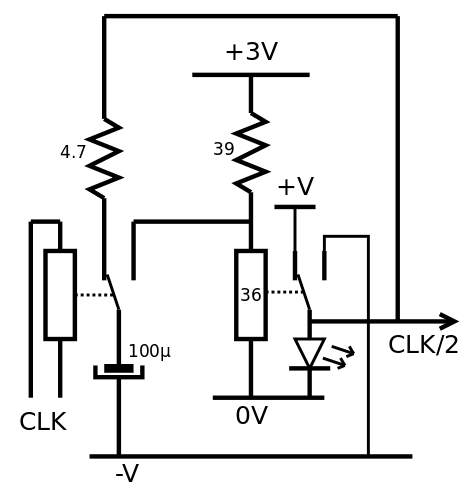I have been recently tipped that a single-relay divide-by-two circuit existed in the literature.

It appears in "Professionelle Schaltungstechnik" Band 4, page 63, from editor Francis Verlag.
I recognize many familiar features and it makes a great use of a DPDT relay. The only main difference is that the relay's SPDT switch can cut the power from its own coil.

We find the similar-looking current limiting resistor that reduces inrush current in the capacitor, the capacitor that is charged with an alternating voltage, then tied to the relay coil...
I believe that the hysteretic system (where the coil is always half-powered) reduces the energy that is necessary to turn the relay fully on and we can use a smaller, cheaper capacitor. Of course it increases the quiescent power but the working power is halved, and it all reduces to the same consumption in a computer where most bits are 1 half of the time. Hysteresis reduces the power spikes, though, and with the first circuit, they would get pretty intense with a long ripple propagates in a large binary counter...
 Yann Guidon / YGDES
Yann Guidon / YGDES
Discussions
Become a Hackaday.io Member
Create an account to leave a comment. Already have an account? Log In.